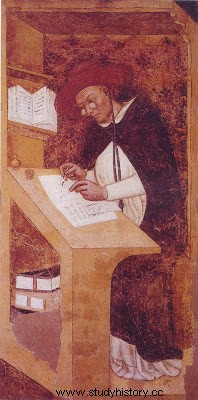
A man suffering from myopia with glasses in the Middle Ages
The fact that the term “ myopia " comes from the Greek “myopos”, or “ he who closes his eyes ", With reference to the typical habit of those who suffer from it of squinting the eyelids in an attempt to see a little better, attests to how widespread this ocular pathology was, even in ancient times, which essentially consists in the difficulty of focusing on objects far away.
Today we can only imagine how difficult the life of short-sighted people must have been in the past, as this common vision defect was not treated at all :Egyptians, Greeks and Romans, however advanced and able to perform operations in the eyes of a certain complexity, for example to remove cataracts, as some sources in our possession attest, they could do nothing for myopia and not even for presbyopia, bad near vision.
The first corrective lenses they began to appear only in the middle of the Middle Ages, precisely at the beginning of 1300 , in Italy, but only for the presbyopic.
The nearsighted people had to wait more than a century to be able to correct their disorder, when finally, in 1450, the German cardinal and intellectual Niccolò Cusano (1401-1464) invented concave lenses .
Among the first users and admirers of the miraculous discovery was Pope Leo X , strongly myopic like most of the members of the family to which he belonged, the Doctors . (Photo gives:www.mda-arte.blogspot.com)
